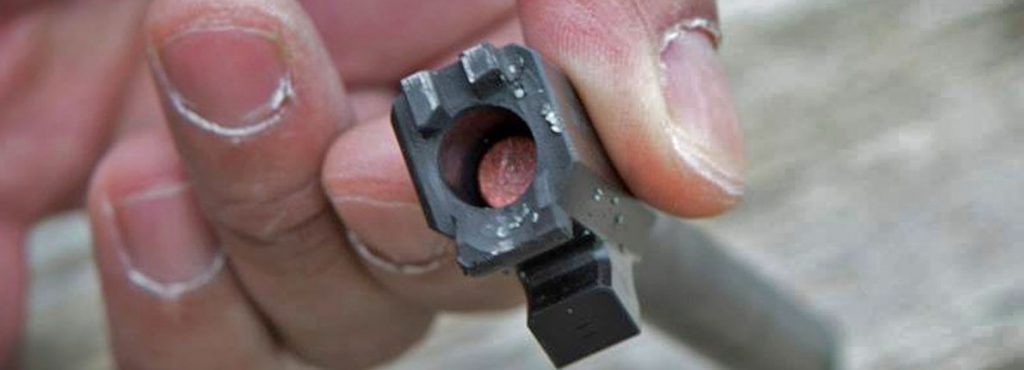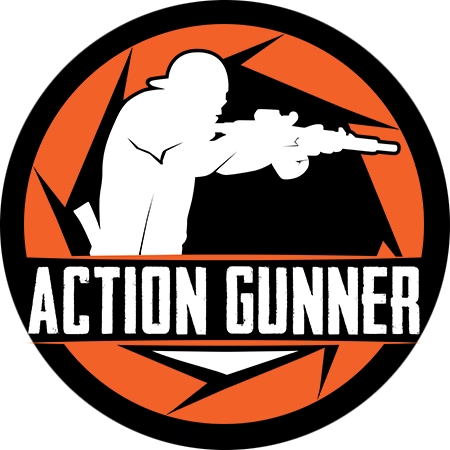Squib Loads: What Every Competitive Shooter Needs to Know
In the fast-paced world of competitive shooting, every round counts. Accuracy, timing, and reliability are critical to staying ahead in the match. But what happens when something feels… off? Your shot is quiet, there’s little to no recoil, and your bullet doesn’t hit the target. Suddenly, panic sets in. Congratulations—you’ve just encountered a squib load.
Squib loads can range from inconvenient to downright dangerous, depending on how you handle them. For shooters in IPSC, USPSA, IDPA, or 3-Gun matches, knowing how to identify and respond to a squib load is important. In this guide, we’ll break down everything you need to know about squib loads, including how to identify them, avoid them, and handle them safely.
What Is a Squib Load?

A squib load occurs when a cartridge—whether it’s factory-loaded or handloaded—fails to generate enough pressure to properly eject the bullet from the barrel. This is often caused by incomplete or missing powder in the cartridge. While still rare, squib loads are more common than you’d think, especially among reloaders or when factory quality control is inconsistent.
Here’s how a squib load typically occurs:
- The primer ignites, causing a pop or soft report.
- However, due to insufficient or absent powder, the expanding gases don’t generate enough force to propel the bullet out of the barrel.
- In most cases, the bullet gets stuck inside the barrel.
While it may not sound alarming, firing another round without clearing the obstruction can have catastrophic results. Blown barrels, flying shrapnel, and serious injury are all possible outcomes if you don’t immediately address a squib load.
Signs of a Squib Load
Recognizing a squib load on the fly is a critical skill for any shooter—especially during the high-adrenaline moments of a match. Here’s what to look (and listen) for:
- Unusual Sound
- Squib loads produce a noticeably softer “pop” instead of the usual loud bang. It’s much quieter, and if you’re paying attention, it’s an immediate red flag.
- Minimal or No Recoil
- Without sufficient gunpowder, there’s less force, leading to significantly reduced recoil. For seasoned shooters, this will feel wrong right away.
- Failure to Cycle
- In semi-auto firearms, a squib load often won’t generate enough gas pressure to cycle the next round into the chamber.
- Bullet Impact Issues
- If your round doesn’t hit the target and there’s no obvious explanation (e.g., wind, poor aim), a squib might have occurred.
- Visible Barrel Obstruction
- If safe and practical, inspect the barrel (after unloading your firearm) for signs of a lodged bullet.
Why Squib Loads Happen
Understanding the causes of squib loads can help prevent them. Here are the main culprits:
Factory Ammunition
- Quality control issues can lead to insufficient powder or primer malfunctions. While rare with reputable manufacturers, “cheap” or remanufactured ammo increases the risk.
Handloaded or Reloaded Ammunition
- Skipped or insufficient powder charges during reloading are a common cause.
- Malfunctions in reloading equipment, such as uncalibrated powder droppers, can introduce inconsistencies.
- Distractions during the reloading process increase the likelihood of human error.
Environmental Factors
- Moisture or contamination in ammunition can affect powder performance, especially if ammo is improperly stored.
How to Handle a Squib Load
Stopping a potential disaster starts with proper training and discipline. Here’s what to do the moment you suspect a squib load:
1. Cease Fire Immediately
- The moment you think you’ve experienced a squib load, stop shooting—no exceptions. Continuing to fire without addressing the issue can destroy your firearm and injure yourself or others.
2. Unload Your Firearm
- Safely remove the magazine and clear the chamber. Double-check that the firearm is unloaded before proceeding.
3. Inspect the Barrel
- Check for obstructions using a bore light or by visually inspecting the barrel. Never attempt to fire another round through a barrel with an obstruction—it’s a recipe for disaster.
4. Clear the Obstruction
- Most squib loads can be cleared by carefully removing the bullet with a brass rod and mallet. Avoid using excessive force or metal tools that could damage the bore. Take your time and perform this step away from the match line.
5. Assess and Resume
After clearing the obstruction, inspect your firearm for damage. If everything checks out, perform a function test and resume shooting. If you’re unsure, consult a gunsmith.
Prevention: Tips to Avoid Squib Loads
Squib loads are rare but preventable. Taking these steps can minimize your risk:
1. Use Quality Ammunition
- Stick to reputable factory brands like Federal, Winchester, or Hornady, which have rigorous quality control processes. Avoid bargain or remanufactured ammunition unless you trust the source.
2. Practice Safe Reloading Habits
- Inspect every powder charge to ensure it’s consistent. Use a powder-check die if possible.
- Regularly calibrate your reloading press and powder measure.
- Reload in a distraction-free environment. Avoid multitasking or rushing through the process.
3. Store Ammunition Properly
- Keep ammo in a dry, cool environment to avoid contamination or degradation of powder.
4. Maintain Your Firearm
- Regular cleaning and inspection can prevent malfunctions that mimic squib loads. Ensure your barrel is clear of obstructions before each shooting session.
The Dangers of Ignoring a Squib Load
Let’s set the scene: You’re mid-stage at a match, and you experience a squib load. An astute RO would be quick to stop you – but what if they aren’t fast enough or the STOP! command wasn’t immediately audible?
Without realizing it, you tap-rack & fire again. The second round slams into the lodged bullet, causing a catastrophic failure. High pressure gas has nowhere to go but back through the chamber – your firearm is likely destroyed, and you might even be injured.
This nightmare is avoidable. Recognizing the signs and responding quickly can save your gear and protect everyone on the range.
Final Takeaways
Squib loads may be uncommon, but when they happen, they demand immediate attention. As a competitive shooter, your job is to:
- Recognize the signs of a squib load.
- Stop shooting and safely clear the obstruction.
- Take preventative measures to avoid squib loads in the future.
By understanding squib loads and preparing for the unexpected, you’ll protect yourself, your gear, and your fellow shooters—keeping the sport we love safe and enjoyable.
Stay sharp out there, Action Gunners, and remember: safety first, speed second.

